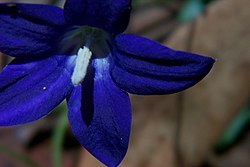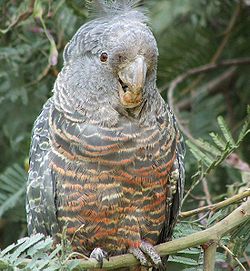Official symbols
| Symbol | Name | Image | Adopted | Remarks |
|---|---|---|---|---|
| Territorial Flag | Flag of the Australian Capital Territory |  | 1993 | |
| Territorial Coat of arms | Coat of Arms of the Australian Capital Territory |  | 7 November 1928 | Granted by King George V to the City of Canberra. The Australian Capital Territory is the only Australian jurisdiction without a coat of arms. |
| Territorial Motto | PRO REGE LEGE ET GREGE | 7 November 1928 | Illustrated with other elements of the coat of arms granted to the City of Canberra, meaning "For the King, the Law, and the People." | |
| Territorial Floral Emblem | Royal bluebell Wahlenbergia gloriosa |  | 26 May 1982 | |
| Territorial Bird Emblem | Gang-gang cockatoo Callocephalon fimbriatum |  | 27 February 1997 | |
| Territorial Colours | Blue and Gold | |||
| Territorial fossil Emblem | Batocara mitchelli | [1] | ||
| Territorial tartan | City of Canberra tartan |  | - | The City of Canberra tartan was recorded in 1997, and has since been registered in the Scottish Register of Tartans (SRT). [2] [3] Technically, the tartan is registered as a fashion tartan, not a district tartan. [2] It has also not been formally adopted as an official emblem either of the city, or of the ACT. [4] However, the tartan is supported by the ACT government and is worn by Canberra's official town crier. [4] |
| Territorial government logo | Government of the Australian Capital Territory Logo | |||